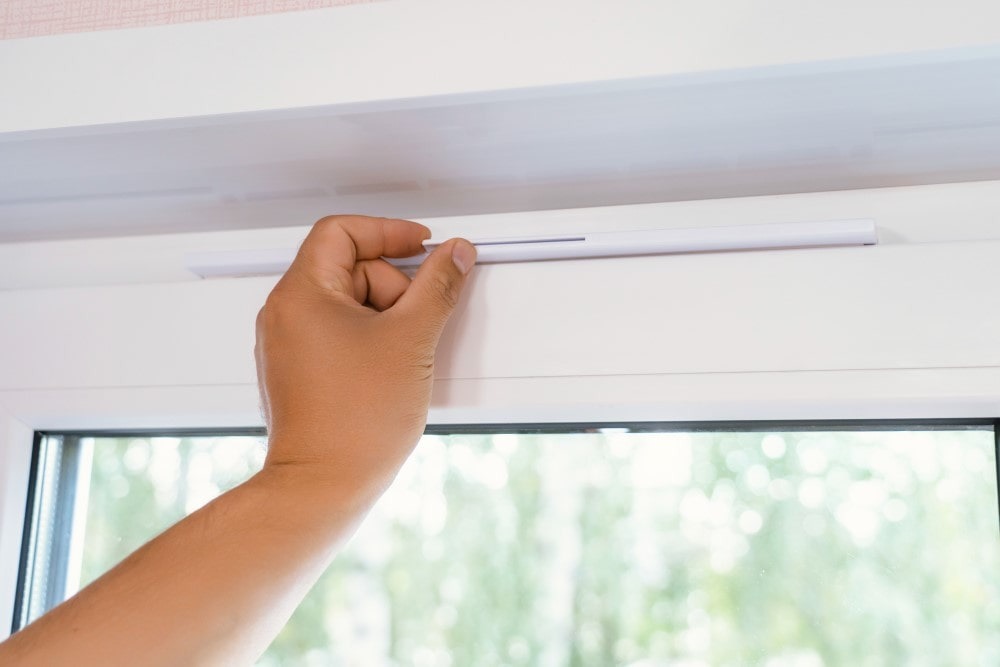
Fresh indoor air is not a luxury, but the basis of a healthy life. Most often, however, ventilation is associated exclusively with a grille in the bathroom, a kitchen hood or with a ajar window. In fact proper air exchange is crucial both for the comfort of everyday life and for health. Especially today, when energy-efficient houses are being built and windows and doors are becoming more and more tight. Without proper air circulation, the risk of the appearance of dampness, mold increases, and air quality also decreases. Moreover, modern construction focuses on reducing energy losses, which is why ventilation must be not only effective, but also economical.
It has long been known that the quality of the exhaled air is of great importance for health and well-being. Currently, 80-90% of life takes place indoors. That is why it is so important that the air inside the building is not worse than outside, especially during the heating season.
Proper ventilation removes excess moisture and debris, and at the same time ensures a constant supply of fresh air, which directly translates into health and comfort of life.

Healthy air in the home is one that promotes well-being and does not cause negative health effects - neither in the short nor in the long term. The key concept in this context is IAQ (Indoor Air Quality), that is, indoor air quality. IAQ refers to the condition of the air in enclosed spaces — such as homes, apartments, offices — and its impact on the health and comfort of those inside.
Contrary to appearances, the air in the house is not always cleaner than that outside. On the contrary, it may contain many times more pollution, which come from everyday activities (cooking, cleaning, burning candles), building materials, furniture or lack of adequate ventilation.
Good air quality translates into better sleep, concentration, resilience and comfort of life. It is the foundation of a healthy home, which is as important as good food or physical activity. That is why proper ventilation and monitoring of IAQ indicators are so important.
You may also be interested in: Window adjustment winter/summer - summer/winter. The Complete Guide
Symptoms of improper air exchange are usually easy to notice, although they are often downplayed. The most common signs of problems with ventilation include:
Sometimes an alarm signal is also unpleasant odor lingering indoors or uneven temperature — overheating of rooms in winter or their excessive cooling. All these signs indicate that the ventilation is not working properly and needs to be improved.

The type of ventilation used greatly affects the comfort of residents and the operating costs of the building. In modern construction, both traditional systems and mechanical solutions with heat recovery are used.
This is the most traditional ventilation system, based on natural air draft. Fresh air enters through leaks in windows and doors, and then it is drawn out through ventilation ducts.
Advantages: low cost, no need for complex installation.
Disadvantages: dependence on weather conditions (the draft works only when it is cooler outside than at home), low efficiency in modern, airtight buildings.
It is a system in which the used air is removed to the outside by means of fans. Fresh flows through the diffusers in the windows or walls.
Advantages: greater control over the air flow, independence from the weather.
Disadvantages: no heat recovery, possible energy losses.
The most advanced system that works in both directions: it supplies fresh air and removes waste, while recovering heat from the exhaust air.
Advantages: significant energy savings, air filtration, full control over air exchange.
Disadvantages: higher installation costs, the need for regular servicing.
Also read: Why do windows evaporate? Causes of foggy windows from the outside and from the inside
Modern window and door joinery is designed primarily with energy efficiency in mind. Multi-chamber profiles, shaft packages and sealing systems effectively reduce heat loss and protect against external noise. Such tightness also has its dark side - the natural air supply, which used to be through leaks in older wooden windows, becomes almost completely blocked. As a result, there is a problem of insufficient ventilation, and with it the risk of excessive moisture, fogged windows or the development of mold.
In order to reconcile the requirements of energy efficiency with the need for constant air circulation, special solutions are used that are mounted directly in the joinery - first of all window diffusers.

These are small devices installed in the frame and sash of the window, which allow air to flow from the outside without having to open the window. Thanks to them, it is possible to maintain the correct operation of gravity or mechanical ventilation, and at the same time preserve the tightness and comfort of use of carpentry.
Types of diffusers and their functions:
Thanks to such solutions, window joinery not only protects against energy loss and noise, but also actively supports proper ventilation, providing a healthier indoor microclimate.
In energy-saving and passive houses, ventilation is considered an integral element of the design. Sealed window and door joinery minimizes energy loss, but at the same time limits natural air flow. Therefore, they play a big role windows with vents, which allow a controlled supply of fresh air without the need to open the wings. In modern solutions, hygrocontrolled diffusers are used, which automatically react to the level of humidity in the room, or acoustic ones - additionally damping noise from the outside. Thanks to them, it is possible to reconcile the high tightness of the windows with the requirements for proper circulation.
Increasingly, the addition of carpentry becomes recuperation with heat recovery, which provides continuous air exchange, while reducing energy losses. In combination with air filters protects against smog, pollen and allergens - which is of great importance in densely built-up agglomerations. The next step is systems Intelligent control, which automatically regulate the intensity of ventilation based on air quality, temperature and the presence of residents.
This integrated approach allows you to maintain a high level of comfort of life while meeting strict energy efficiency standards.
This is also worth knowing: When and how to adjust the windows? Practical guide

Even the best ventilation system will not work properly if it is misused or incorrectly designed.
Among the most common errors are:
Children, seniors and people with allergies and respiratory diseases are particularly sensitive to indoor air quality. Their immune and respiratory systems do not always cope with pollution as well as in adults and healthy people. therefore adequate ventilation and a constant supply of fresh air are crucial for their health and comfort of life.
Remember that the quality of the air we breathe at night directly affects the recovery of the body, immunity and well-being. Therefore, special care should be taken precisely in the bedrooms and children's rooms - it is there that we spend the most uninterrupted hours every day.

Tight windows reduce heat loss and noise, but without diffusers they can degrade indoor air quality. Therefore, when choosing joinery, it is worth paying attention to models with ventilation systems. Alternatively, check the design for effective ventilation.
Diffusers allow fresh air to flow without opening the window. They can be permanently adjusted manually or automatically, pressure, hygrocontrolled or acoustic, depending on the needs of the building and residents.
No, if they are correctly selected and mounted. Modern diffusers provide a constant, controlled air flow and do not reduce thermal comfort. Nevertheless, with efficient ventilation, air flow can be felt.
Yes, many models of diffusers are suitable for installation in a window frame, also in older structures. It is important that there is enough space on the frame for mounting the hoods. However, it is worth entrusting this installation to specialists so as not to worsen the insulation performance of the joinery
Diffusers should be regularly cleaned of dust and checked for patency. It is good to preserve window seals with silicone formulations.
Open exterior blinds do not block the vents, and can further improve the sound and thermal insulation of windows. Interior curtains also do not interfere with the operation of the diffusers, although they can limit the natural circulation of air in the room.
No — simply replacing with airtight models without diffusers often impairs circulation. Combining good carpentry with a proper ventilation system is key.
Ventilation is not only a matter of convenience, but above all health. Tight carpentry and modern construction require additional systems that ensure the supply of fresh air, remove excess moisture and improve the quality of indoor life. Depending on your needs and budget, you can use diffusers, mechanical ventilation or recuperation. A properly selected system guarantees comfort, energy efficiency and health safety of residents.
Check out the range of energy-saving windows Comsta - manufacturer of PVC windows. See models that combine great insulation with ventilation solutions. We invite you to contact us!